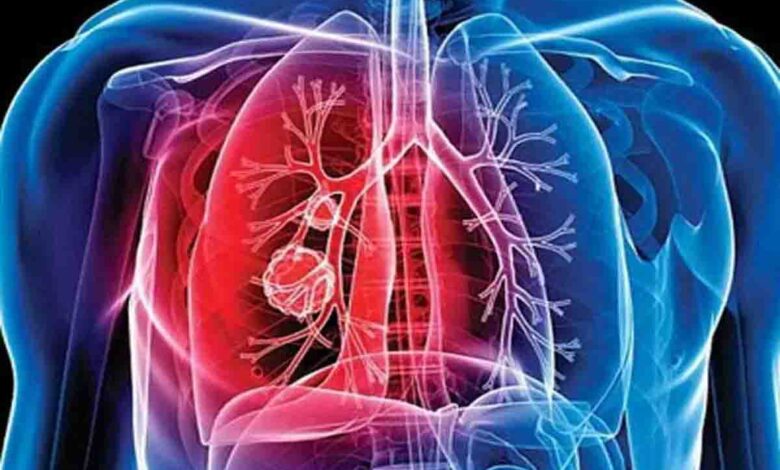Inadequate dose & inadequate duration, main causes of drug resistant TB

Monday, 27 March 2023 | Dr Gaurav Sanjay
GUEST COLUMN

Tuberculosis bacilli (TB) have lived in symbiosis with mankind since prehistoric times. TB is recorded in Indian, Egyptian, Greek and Roman civilisation as far as 5,000 years ago. As done annually, the World Tuberculosis Day was held recently on March 24 to raise public awareness about the devastating health, social and economic consequences of TB and to step up efforts to end the global TB epidemic. The date marks the day in 1882 when German physician Dr Robert Koch had discovered the bacteria that causes TB. For that he was awarded the Nobel Prize in 1905.
Tuberculosis is preventable and curable. It is time to act, to find, treat and end this disease at a time when a quarter of the world’s tuberculosis patients live in India. According to a World Health Organisation (WHO) report of 2021, diagnosis of TB and drug-resistant TB remains a challenge with a third of people with TB and more than a half of people with drug-resistant TB not receiving quality diagnosis and care globally. The situation is worse in India due to poor socio economic status of the patients and under-developed health care services in the country particularly in rural and remote areas of the nation. The services are relatively better in metropolitan cities due to high end health care services provided by both government and private sectors.
Due to better socio economic conditions in the cities there is better awareness about the causes of spread of infections and about the measures for preventing the infections. If TB infection is diagnosed early then the infection can be controlled early and easily even in cases of multi resistant infections. The multi-drug resistant (MDR) infection is quite common in chest TB but it is also being seen in skeleton tuberculosis. The author has the experience of encountering MDR TB infection of the spine. Bone tuberculosis usually presents mild to moderate pain, stiffness of affected area, swelling and restriction of the movement of the affected joint and area. Earlier most of the spinal infection used to present with the huge paravertebral abscess and neurological deficit in limbs and rarely with loss of bladder and bowel control but nowadays people are usually experiencing back pain and stiffness which can be easily diagnosed with MRI of the affected area. Spinal tuberculosis is usually treated in early stage with conservative treatment which includes rest to the part, nutritious diet and non-steroidal anti-inflammatory and anti-tubercular drugs. The patients usually start responding to the treatment within 3-6 weeks and if they do not respond then one should analyse the cause of the lack of response to the treatment. In my opinion inadequate investigation, delayed or wrong diagnosis and improper and inadequate treatment are the main causes of the failure of treatment. The doctor can be blamed for empirical treatment/wrong diagnosis but patients are to be blamed for irregular and inadequate duration of treatment.
India is facing the highest burden of drug resistant (DR) TB worldwide. If we look deeply at the problem of MDR, it is a big problem in our country though the government is giving free medicines in government hospitals. In spite of all this, these patients are either borrowing money or selling their property to treat it especially in surgical and complex TB cases. Drug resistance is a formidable obstacle to TB care and prevention globally, making it harder and longer to treat, often with poorer outcomes for patients. It becomes somewhat difficult to treat TB infection, especially when it is MDR, extensively drug resistant (XDR), total drug resistant (TDR) tuberculosis. TDR TB is defined as a form in which none of the drugs available till date is effective against it.
I believe that lack of awareness about TB still exists today, which is making it very difficult for the society and country to control TB. The principle of prevention is better than cure should be understood very well in order to prevent any infection but particularly in case of TB infection. Inadequate dose for inadequate duration is the main cause for MDR-TB or XDR-TB. MDR/XDR-TB is a major problem not only in our country but in the whole world. This is a man-made catastrophe. The reason for the inadequate dose could be poverty, non-availability of TB drugs, non-availability of trained paramedical and medical staff and dis-continuation of TB drugs abruptly. It is seen because early results of anti-tubercular treatment are very effective. The patients within 3-6 weeks become not only asymptomatic but also think that they have become disease free. Therefore they discontinue the treatment.
Delayed response to the treatment is usually due to poor immunity of the patients. The immunity is usually reduced if patients are on steroid therapy for any other medical problem or suffering with HIV infections or having associated lifestyle disease like diabetes or have already got DRTB infection.
The National Tuberculosis Elimination Programme, previously known as Revised National Tuberculosis Control Programme, aims to strategically reduce TB burden in India by 2025, five years ahead of the Sustainable Development Goals. The programme has a vision of achieving a “TB free India” with strategies to provide various free of cost, quality diagnosis and treatment services across the country through the government health system. Typically, the drug regimen consists of four drugs in an intensive phase of about two to six months and three drugs in a continuation phase of four to 18 months. To get the better result the immunity of the patients can be improved but drug resistant TB is difficult to treat easily because the drugs used to treat drug resistant TB are not easily available and if so they are costly and more toxic than primary line drugs. At later stage when infection does not respond to the treatment or during treatment patients develop neurological deficit like loss of sensory, motor power, bladder and bowel control, then surgical intervention is needed usually in the form of decompression of pressure on the spinal cord, correction and fixation of deformity and bone graft to enhance the fusion. Irrespective of the type of surgery, patients need anti tubercular drugs and other supportive therapy.
(The author is an orthopaedic surgeon based in Dehradun. Views expressed are personal)






